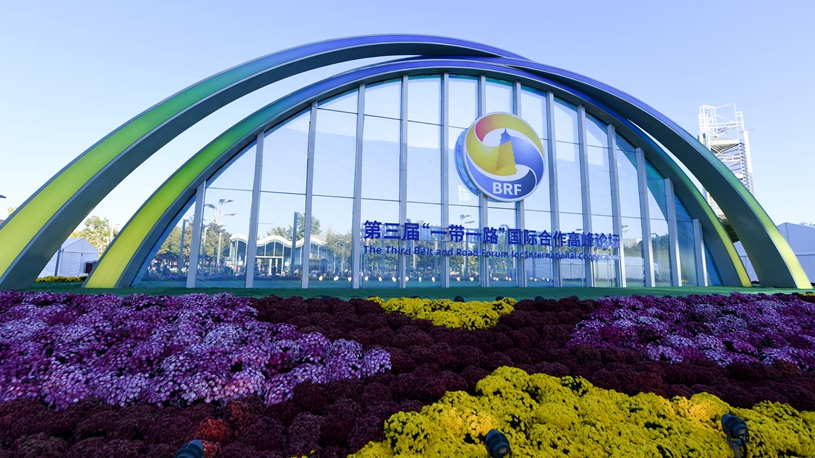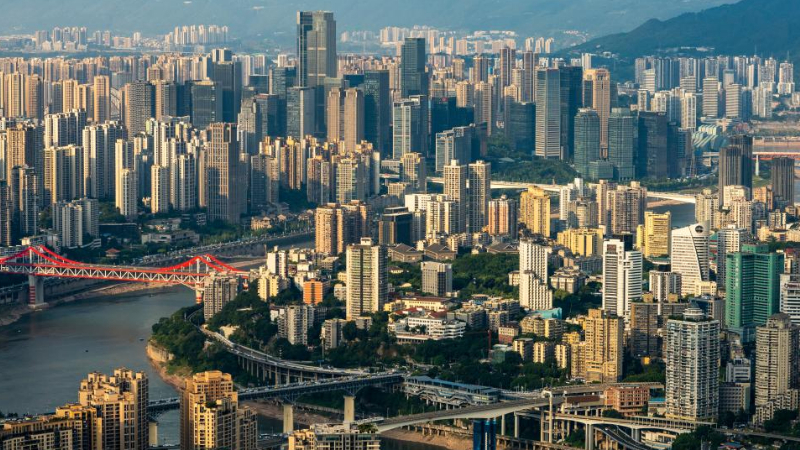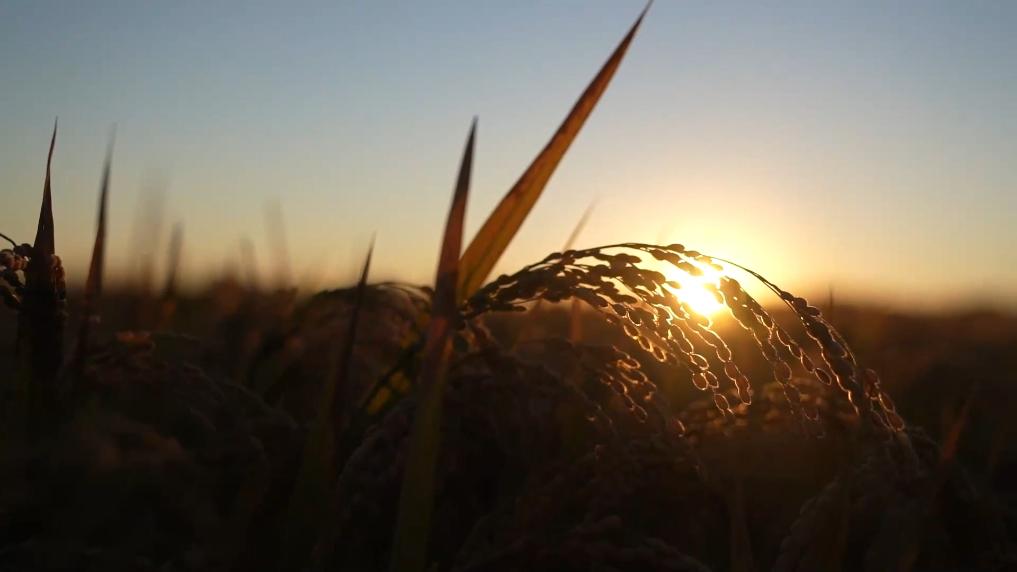* Autumn grain production is the lion's share of the annual grain output in China.
* To achieve a bumper harvest of autumn grain, the country's major grain producing areas have spared no effort in promoting soil conservation and agricultural science and technology.
BEIJING, Oct. 16 (Xinhua) -- Despite the heavy rain and flooding brought by remnants of a typhoon in August, Yu Dianhong, a rice grower in northeast China's Heilongjiang Province, the country's top grain producer, still expects a bumper autumn harvest this year.
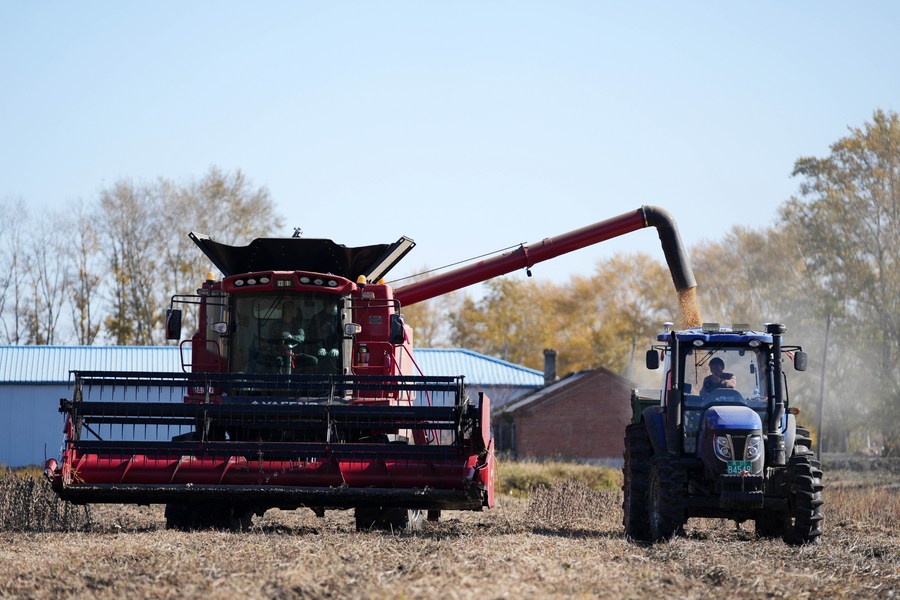
A reaper unloads harvested beans at a field in Fujin City, northeast China's Heilongjiang Province, Oct. 11, 2023. (Xinhua/Wang Jianwei)
Yu lives in Zhenxing Village of Wuchang City, famous for Wuchang rice and known as the main production area of high-quality rice in Heilongjiang.
In Zhenxing, with harvesters shuttling back and forth in the paddy field, the rice ears are quickly processed by machinery for threshing, and grains are collected in warehouses.
"The flooding in the field was very severe. After removing excess water and taking advantage of the sunlight, we quickly sprayed foliar fertilizer and many of the flooded rice ears blossomed again," Yu said.
"We have this fertile paddy field, and as long as there are people and land, there is hope, and we will do our best to ensure the supply of high-quality Wuchang rice," Yu added.
Heilongjiang has remained China's top grain producer for 13 consecutive years. According to the provincial department of agriculture and rural affairs, the province's grain growing area has remained above 200 million mu (about 13.33 million hectares) this year.
In 2022, the province produced about 77.63 billion kg of grain, accounting for 11.3 percent of the country's total.

This photo taken on Oct. 9, 2023 shows a paddy field in Gannan County of Qiqihar, northeast China's Heilongjiang Province. (Xinhua/Zhang Yue)
Autumn grain production is the lion's share of the annual grain output in China. To achieve a bumper harvest of autumn grain, the country's major grain producing areas have spared no effort in promoting soil conservation and agricultural science and technology.
Soil is the basis for agriculture. In recent years, Heilongjiang has prioritized the protection of its black soil in a significant move to safeguard China's food security.
Dubbed a "giant panda in cultivated land," black soil constitutes the food basket for many. The black soil -- or chernozem soil -- found in China's northeastern provinces of Heilongjiang, Jilin and Liaoning, as well as some eastern parts of north China's Inner Mongolia Autonomous Region, produces about a quarter of the country's total grain output.
Meanwhile, novel technologies, such as remote-sensing aircraft and big data, have been used for black soil protection.

This photo taken on Oct. 13, 2023 shows a monitor system of Internet of Things near a field in Fuyuan City of northeast China's Heilongjiang Province. (Xinhua/Wang Jianwei)
In August 2022, a law on black soil conservation came into effect in the country, specifying the responsibilities of the government and "agricultural production operators" to protect the black soil. It stipulates harsher punishments for those who cause pollution or soil erosion in black soil areas.
Some 2,100 km from Heilongjiang in Tianchang City in east China's Anhui Province, agricultural drones have been used to spray pesticides in paddy fields to boost farming efficiency.
What was once a rare sight has become commonplace in numerous rural areas across China. In Tianchang, Ping Donglin looks after 9,200 mu of cropland, where many new agricultural technologies, such as drones, agricultural sensors and specialized fertilizers, have been applied.
"The average yield for rice this year is about 650 kg per mu, which marks an increase compared with previous years," said Ping, chairman of Tianchang hehe ecological agriculture professional cooperative.
In Heilongjiang, which is also China's largest soybean-producing region, the implementation of a high-density soybean planting technique has significantly boosted yields.
"We use a 'large-ridge and high-density' method, plus precision seeding, to plant soybeans, which has a high seeding rate and better ventilation and drought resistance ability," said Shan Qingdong, chairman of an agricultural cooperative in Yongheng Township.
In Liuxingyu Village of Dezhou City, east China's Shandong Province, the construction of high-standard farmland involving irrigation ditches and underground pipelines has benefitted local farmers.
"With such good farmland, this season's average corn yield per mu reached 840 kg, with an increase from last year," said Liu Lingju, a local farmer from Liuxingyu Village.
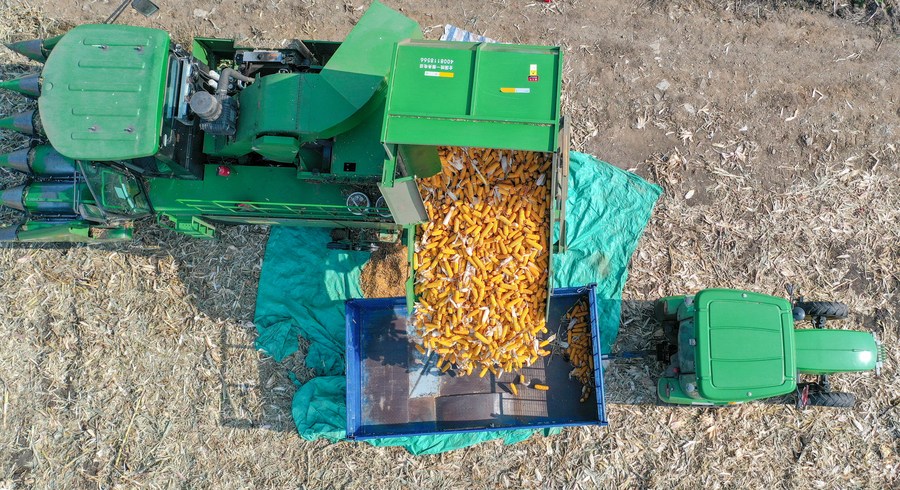
This aerial photo taken on Oct. 11, 2023 shows a farmer unloading harvested corn onto a truck with a machine at a farm cooperative in Fanjiatun Town, Gongzhuling City of northeast China's Jilin Province. (Xinhua/Zhang Nan)
In Lishu County of Jilin Province, a major grain producing county in China, corn stalks sway in the wind and will be harvested soon. "The corn kernels are in full size and a good harvest will come," said Zhang Wendi, a local farmer.
"We use conservation tillage technology to protect the black soil, which requires less fertilizer and significantly enhances the ability of corn to resist drought, and the yield is becoming more and more stable," Zhang added.
Li Baoguo, a professor at China Agricultural University, said that stabilizing autumn grain production is of great significance to ensure the stability of grain output throughout the year.
"This year, the temperature, light and water conditions are suitable for autumn grain growth. Judging from the current autumn harvest situation, the entire country is expected to usher in a bumper harvest this year," Li added.
(Video reporters: Wang He, Shi Feng, Zhu Xiaoguang, Jin Jian, Si Xiaoshuai, Shao Meiqi; Video editors: Wu You, Wei Yin, Hui Peipei, Zhou Saang) ■

